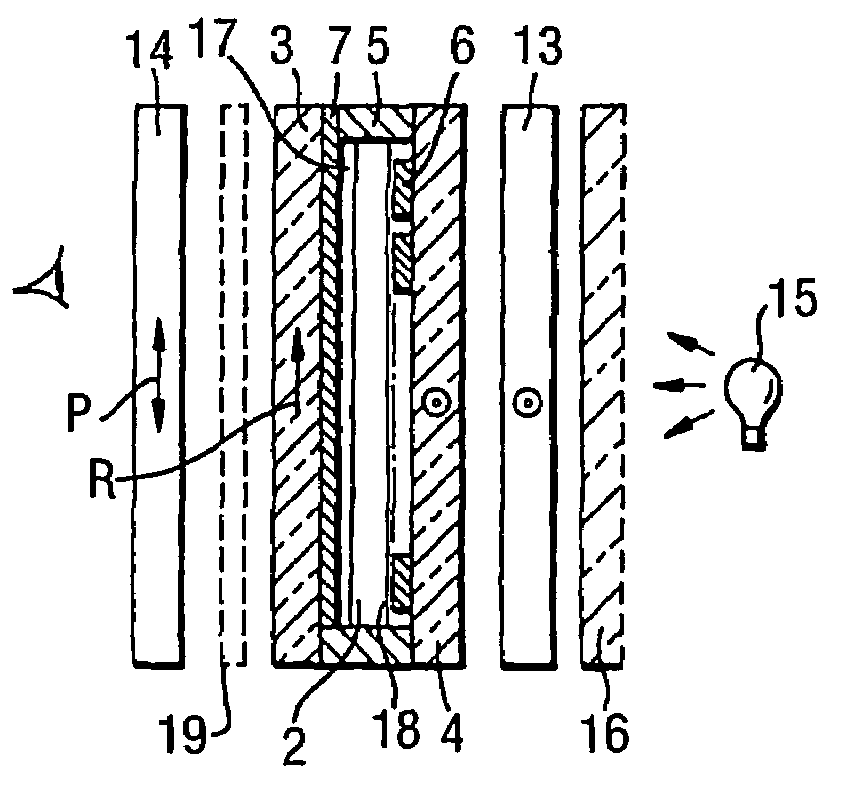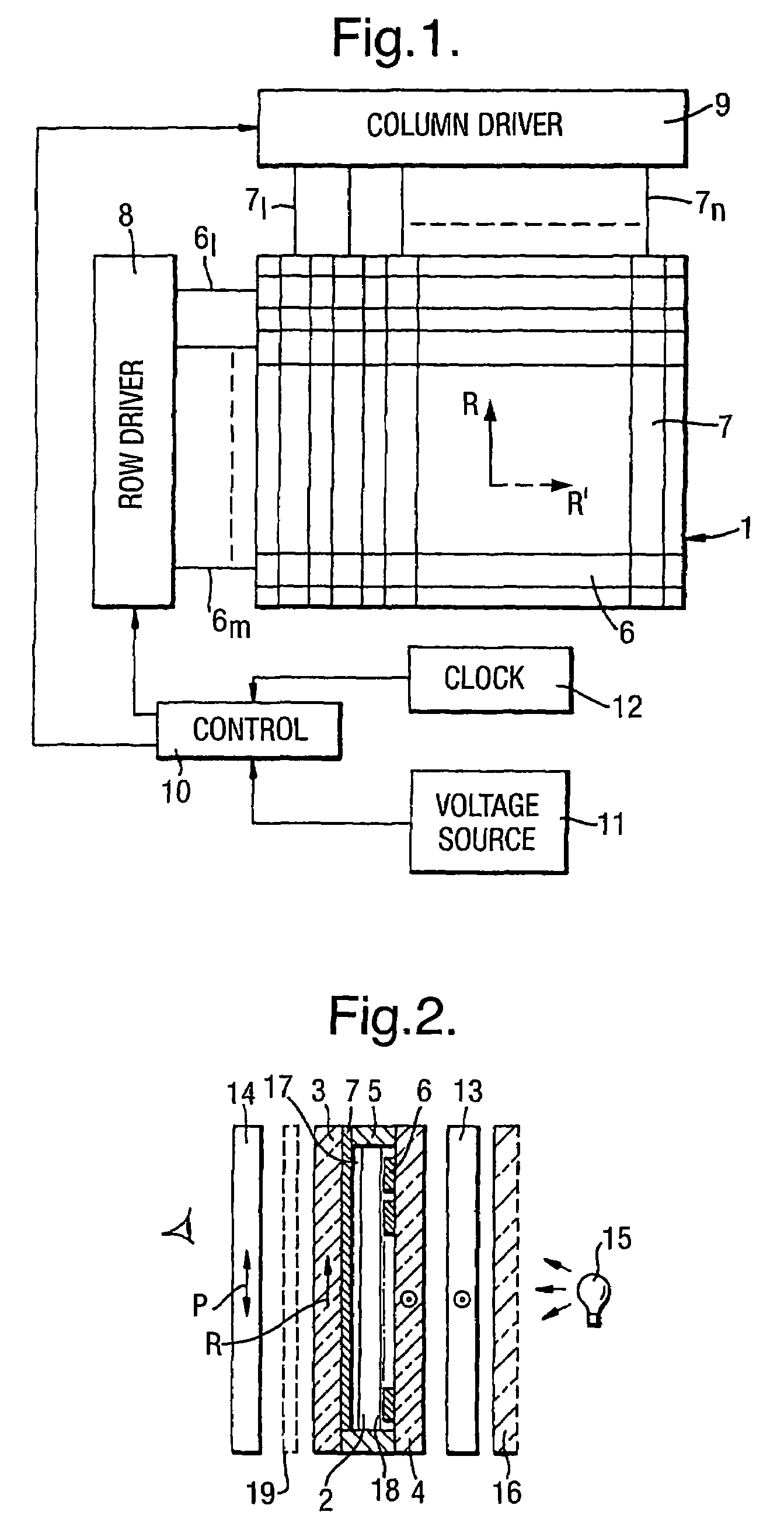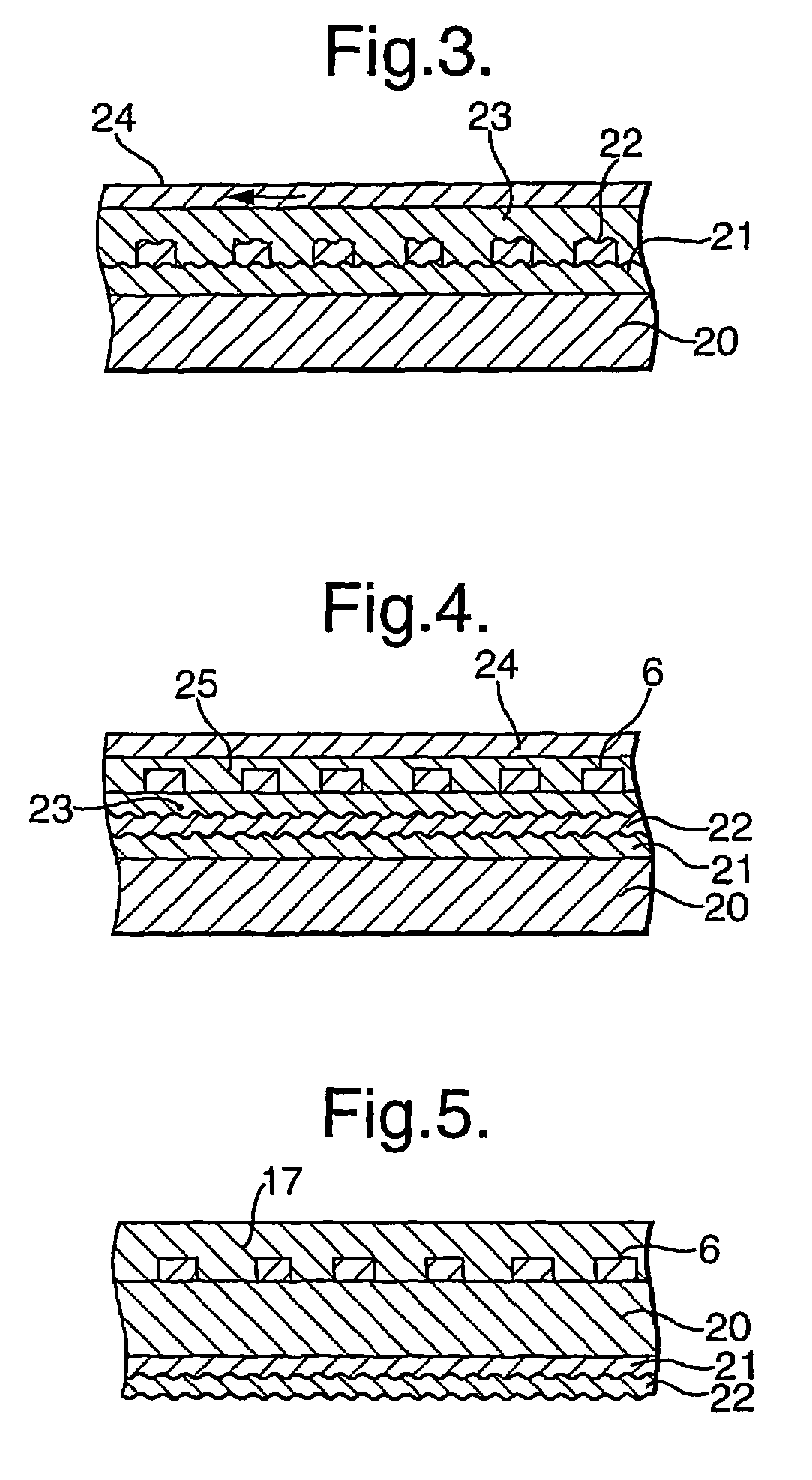Liquid crystal reflective displays
a technology of reflective displays and liquid crystals, applied in non-linear optics, diffusing elements, instruments, etc., can solve the problem that the rubbing step is not compatible with conventional clean room processing techniques
- Summary
- Abstract
- Description
- Claims
- Application Information
AI Technical Summary
Benefits of technology
Problems solved by technology
Method used
Image
Examples
Embodiment Construction
[0022]The display in FIGS. 1, 2 comprises a liquid crystal cell 1 formed by a layer 2 of nematic or long pitch cholesteric liquid crystal material contained between glass walls 3, 4. A spacer ring 5 maintains the walls typically 3–12 μm apart. Additionally numerous beads of the same dimensions may be dispersed within the liquid crystal to maintain an accurate wall spacing. Strip like row electrodes 6 e.g. of SnO2 or ITO (Indium Tin Oxide) are formed on one wall 3 and similar column electrodes 7 are formed on the other wall 4 in a known manner. With m-row and n-column electrodes this forms an m×n matrix of addressable elements or pixels. Each pixel is formed by the intersection of a row and column electrode. The electrodes are covered with a thin layer 17 of polymer e.g. polyimide, which has been rubbed to give alignment to the liquid crystal material 2. For twisted nematic devices the alignment directions on the two walls are approximately orthogonal.
[0023]A row driver 8 supplies vo...
PUM
| Property | Measurement | Unit |
|---|---|---|
| thickness | aaaaa | aaaaa |
| thickness | aaaaa | aaaaa |
| thickness | aaaaa | aaaaa |
Abstract
Description
Claims
Application Information
 Login to View More
Login to View More - R&D
- Intellectual Property
- Life Sciences
- Materials
- Tech Scout
- Unparalleled Data Quality
- Higher Quality Content
- 60% Fewer Hallucinations
Browse by: Latest US Patents, China's latest patents, Technical Efficacy Thesaurus, Application Domain, Technology Topic, Popular Technical Reports.
© 2025 PatSnap. All rights reserved.Legal|Privacy policy|Modern Slavery Act Transparency Statement|Sitemap|About US| Contact US: help@patsnap.com



